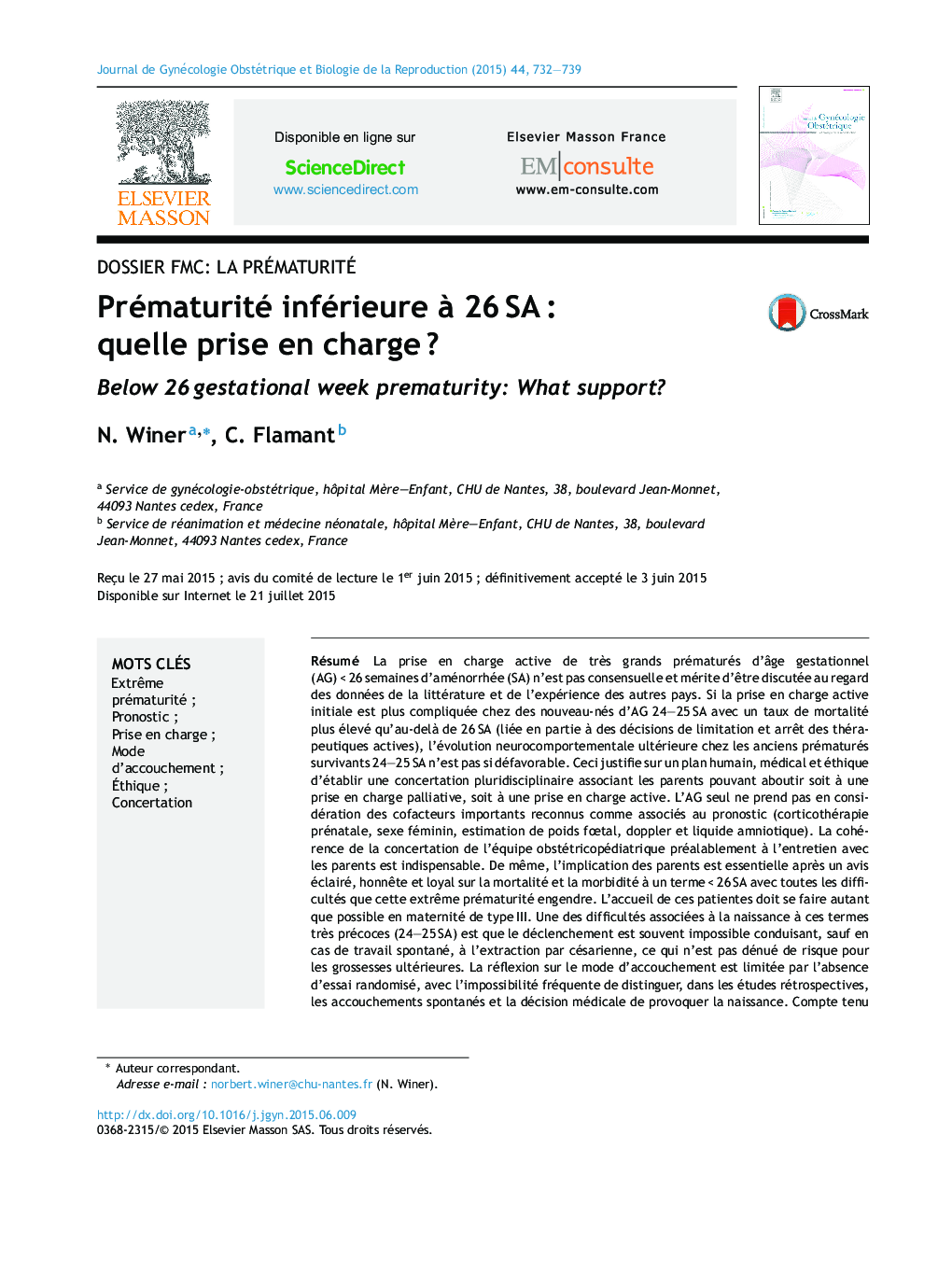| کد مقاله | کد نشریه | سال انتشار | مقاله انگلیسی | نسخه تمام متن |
|---|---|---|---|---|
| 3272245 | 1208327 | 2015 | 8 صفحه PDF | دانلود رایگان |
عنوان انگلیسی مقاله ISI
Prématurité inférieure à 26 SA : quelle prise en charge ?
دانلود مقاله + سفارش ترجمه
دانلود مقاله ISI انگلیسی
رایگان برای ایرانیان
کلمات کلیدی
موضوعات مرتبط
علوم پزشکی و سلامت
پزشکی و دندانپزشکی
غدد درون ریز، دیابت و متابولیسم
پیش نمایش صفحه اول مقاله

چکیده انگلیسی
Management and decision whether to begin intensive care for very preterm infants below 26Â WG and at borderline viability remains controversial, and survival rates for these children vary greatly and justify discussion with regards to literature data and according to the experience of others countries. If active management is more difficult with very preterm infants 24-25Â WG, mortality is increased comparing with newborns of more than 26Â WG. This is partly explained by limitations of active neonatal intensive care. Nevertheless, neurocomportemental and cognitive results are not so unfavorable. This justifies a human, medical, and ethical multidiciplinary discussion including the parents' wishes for an active resuscitation or a palliative management. Using the only criteria of gestational age is not a reliable tool to predict survival and neurodevelopmental outcome of preterm infants. It is very important to identify other prenatal factors such prenatal corticosteroid administration, gender, fetal estimated weight, amniotic fluid and absent/reverse end diastolic flow umbilical doppler. Implication and listening the parents' preferences are essential after individual information, objective and a honest counseling including mortality, morbidity and risks of neurocomportmental impairments. Birth and counseling should be done in reference maternofetal center with obstetricians and neonatalogist specialized in this topic. A real difficulty is to consider the route of delivery and the possibility that caesarean section could improve survival rates. Induction of labour is very often a high risk of failure and route of delivery remains controversial and this is a real question in order to improve survival rates. Literature is poor and conflicting without randomized trials. Caesarean section presents maternal risks such as pathologic placentation, haemorrhage delivery and increasing risks for the subsequent gestation. So, if it is not a good idea to recommand a systematic caesarean delivery, it is not ethical to refuse this route of delivery only because of the gestational age even in extremely premature birth.
ناشر
Database: Elsevier - ScienceDirect (ساینس دایرکت)
Journal: Journal de Gynécologie Obstétrique et Biologie de la Reproduction - Volume 44, Issue 8, October 2015, Pages 732-739
Journal: Journal de Gynécologie Obstétrique et Biologie de la Reproduction - Volume 44, Issue 8, October 2015, Pages 732-739
نویسندگان
N. Winer, C. Flamant,